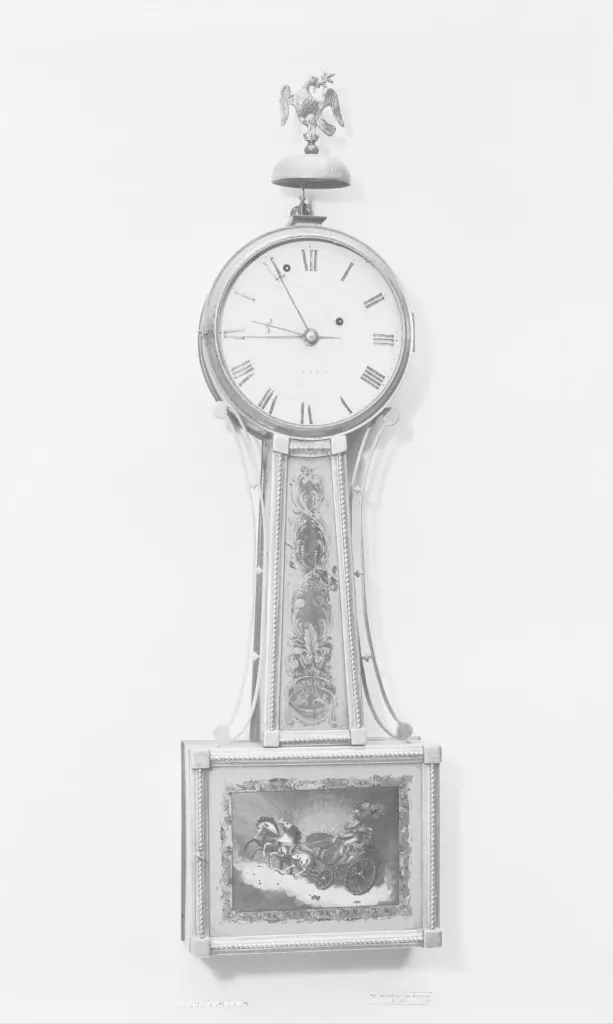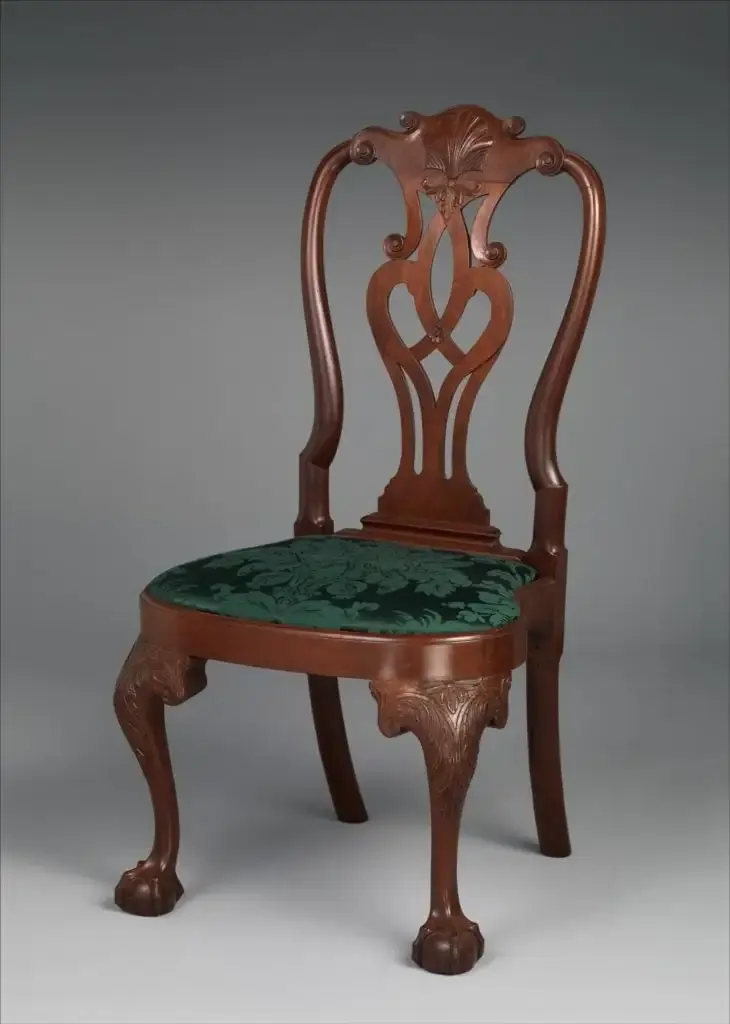The banjo clock is considered advancement, in the history of American clock making industry. Created by Simon Willard in 1802 with its distinct shape resembling that of a musical banjo instrument. The unique design represented a deviation from the tall case clocks providing a compact and aesthetically pleasing choice for households, across America.
Antique clock collectors and enthusiasts appreciate these timeless timepieces, for their history and artistic value. To make choices when purchasing or selling these treasures it is essential to grasp the features, construction techniques and market worth of these antique clocks. This comprehensive guide delves into the core elements of identifying banjo clocks covering attributes, component breakdowns and up, to date market appraisals.
History and Origins of the Banjo Clock
Simon Willard was born in Grafton. Later set up his workshop, in Roxbury where he created the eight day wall clock that ran on weights instead of springs—a clock that would soon change the landscape of American clock making forever.
Simon Willard’s 1802 patent
In 1802 Willard obtained a patent, for his wall clock model. Although the patent offered protection several rival companies created their own versions of the clock without facing any legal consequences from Willard who didn’t take action, against them allowing the design to spread across New England.
Significance in American clock making
America’s inaugural thriving wall clock was symbolized by the banjo clock which brought in innovative elements into play. Willard’s creation managed to cut costs by utilizing a brass mechanism to counter the shortage of brass materials during that time period. Although priced at 30 dollars, for that eras standards the clocks reduced size made it more attainable, for buyers.
Key features of the original design
The original banjo clock incorporated distinctive elements that defined its character:
| Feature | Description |
| Movement | 8-day weight-driven mechanism |
| Display | Circular dial with narrow metal frame |
| Case Design | Banjo-shaped with long-waisted throat |
| Decorative Elements | Reverse-painted glass panels |
| Top Ornament | Brass eagle or pointed orb finial |
Willard’s workshop crafted around 4,000 authentic pieces with a focus, while maintaining both quality and design elements throughout the process. The clock displayed patterns, on glass panels painted on the side to resonate with the artistic tastes of that era. As manufacturing techniques advanced Willard implemented casings and clock mechanisms by 1805 to streamline production without compromising the essence of the design.
Identifying Authentic Banjo Clocks
Authenticating of genuine banjo clocks is quite a challenge, in the market landscape as these timepieces are frequently targeted for counterfeiting among clock collections according to experts in the field, like Robert C Cheney of the Willard House and Clock Museum who has encountered numerous fake pieces during his professional tenure.
Characteristics of genuine Simon Willard clocks
Authentic Simon Willard banjo clocks exhibit specific manufacturing characteristics:
| Feature | Authentic Characteristic |
| Glass Quality | Premium, clear glass without imperfections |
| Dial Construction | Heavy iron with multiple ivory enamel coats |
| Numerals | Roman numerals only, painted in black |
| Movement Mounting | Specific screw pattern with slotted right-angle heads |
| Winding Location | Positioned precisely at 11 o’clock |
Common variations and styles
Legitimate period variations surfaced with authorized productions while adhering to core design elements. Aaron Willard—Simon’s brother—crafted authorized versions that frequently included features, like strike mechanisms and personalized signatures, on waist glasses. Lemuel Curtis—nephew and apprentice—created the girandole variation.
Distinguishing authentic pieces from reproductions
Modern collectors must exercise particular caution when evaluating potential acquisitions. Key authentication points include:
- Glass quality assessment – contrary to common belief, authentic pieces used the highest quality glass available
- Movement examination – specific mounting techniques and hardware types
- Case construction analysis – authentic pieces feature precise construction methods and materials
Authentication skills are, in demand for collectors and institutions due to the rising prices of specimens reaching up to $250,000. The uncovering of crafted reproductions by craftsmen from Massachusetts has underscored the necessity, for thorough verification methods.
Components and Construction
A banjo clock is a fusion of engineering and artistic skill where every part has a dual role. Serving both functional and aesthetic purposes to harmoniously marry form and function, in exquisite design.
Case design and materials
The typical banjo clock case features mahogany construction with a height of approximately 24 inches. The case incorporates multiple specialized components:
| Component | Description |
| Drum Head | Houses movement and dial |
| Throat | Weight and pendulum passage |
| Pendulum Box | Enclosed swing space |
| Door Frame | Access point for maintenance |
Movement types and mechanisms
The weight-driven mechanism operates on an 8-day cycle, requiring weekly winding through an arbor positioned at the dial’s edge. The brass movement features:
- Front-mounted pendulum design for easy maintenance
- Compact brass components for efficient operation
- Fifteen-inch weight drop system
- Specialized suspension system with steel components
Decorative elements (painted dials, reverse-painted glass, etc.)
These watches stand out with their details, such, as the design of the painted iron dial showcasing Roman numerals and spear shaped hour and minute hands along with decorative embellishments, like:
- Reverse-painted glass panels featuring:
- Gold diaper patterns
- Pale blue backgrounds
- Foliate decorations
- Gilded wooden eagle finials
- Brass side arms
- Composition vine brackets
The upper part of the throat usually features patterns on reverse painted glass panels and the lower section showcases oval designs, in shapes outlined by gilded pilasters for a harmonious visual arrangement.
Valuation Factors and Market Trends
Assessing the worth of banjo clocks requires considering elements, like their historical importance and the present market trends. Antique clock valuation is intricate due, to its value. Appeal to collectors seeking such prized possessions.
Maker and provenance
The creator of an item plays a role, in determining its value; for instance authentic Simon Willard creations often fetch prices in the market. Having a documented record of ownership especially links to figures or events can greatly enhance the items value. Timepieces with a history to well-known makers usually hold a more solid position, in the market.
Condition and originality
The preservation state directly impacts valuation, with several critical factors:
- Original components (movement, case, glass panels)
- Functionality of the mechanism
- Quality of any restoration work
- Preservation of original finishes
- Integrity of reverse-painted panels
Rarity and historical significance
Historical importance and scarcity both play a role, in shaping the market value of items from the 1802, to 1830 period making them highly sought after for their significance. The prized possessions usually showcase;
| Historical Feature | Value Impact |
| Original Patent Period | Highest Premium |
| Documented Provenance | Significant Increase |
| Unique Decorative Elements | Notable Enhancement |
| Regional Historical Connection | Moderate Addition |
Recent auction results and price ranges
Recent data, from auctions shows a market environment where traditional antique banjo clocks have seen their decrease while exceptional pieces still fetch high prices, in sales transactions that stand out recently;
- Museum-quality Simon Willard examples: $20,000-$28,750
- Early Aaron Willard pieces: $8,000-$13,200
- Later period authentic pieces: $4,000-$7,500
- Quality reproductions: $1,000-$3,000
In the world of markets today we see a divide, between ordinary goods. Top notch items boasting histories and original features retain their value while average ones witness a drop in interest. Clocks, with makers and historical records are highly prized showing collectors now prioritize authenticity and origin.
Conclusion
Banjo clocks symbolize a blend of creativity and skillfulness that highlights Simon Willard’s forward thinking approach, in clock making during the early 1800s era in America’s history. Their lasting charm derives from their craftsmanship and historical importance. Verifying their authenticity poses a challenge that requires expertise for collectors. Authentic pieces exhibit traits in their high quality materials used in construction and precise mechanical details which distinguish them from imitation versions, on the market.
The market trends show the balance, between the significance and physical state of Willard’s original pieces that remain highly valued as top tier investments. Collectors need to take into account aspects when assessing these clocks such as the authenticity records and original components. The appeal for these pendulum clocks is on the rise among collectors and institutions alike especially, for those that retain their authentic characteristics and exhibit a well-defined historical background.
FAQs
Q: How can you determine the age of a Seth Thomas banjo clock?
A: To accurately date a Seth Thomas banjo clock, follow these steps:
- Identify the logo and any trademark stamps on the clock.
- Look for serial numbers and labels on the case.
- Check for model numbers and date codes.
- Examine the clock for any patent dates.
- Use resources specific to Seth Thomas clocks for further information.
- Consider consulting with experts from Clockworks, Inc.
Q: What is the historical origin of banjo clocks?
A: The banjo clock is a type of clock named for its resemblance to an inverted banjo in shape. It was first patented by Simon Willard of Massachusetts in 1802. This clock typically features a circular dial encased in a narrow metal frame with a dome-shaped glass bezel.
Q: How can you identify an antique clock?
A: To identify an old clock, look for:
- Handwriting such as initials or dates inside the clock, which were added by clockmakers during maintenance or repairs.
- Engraved inscriptions on metal parts like the bezel or the door’s hinges, which may include patent numbers, dates, or places of manufacture.
Q: What are the methods to determine the brand of a grandfather clock?
A: To identify the brand of a grandfather clock, you can:
- Search for the manufacturer’s name, which might be printed or engraved on the clock’s face, the front of the case, or inside the case door.
- Look for a pasted tag on the backside or inside of the clock case.
- Refer to model numbers found in trade catalogs, which can sometimes help in identifying the clock.



